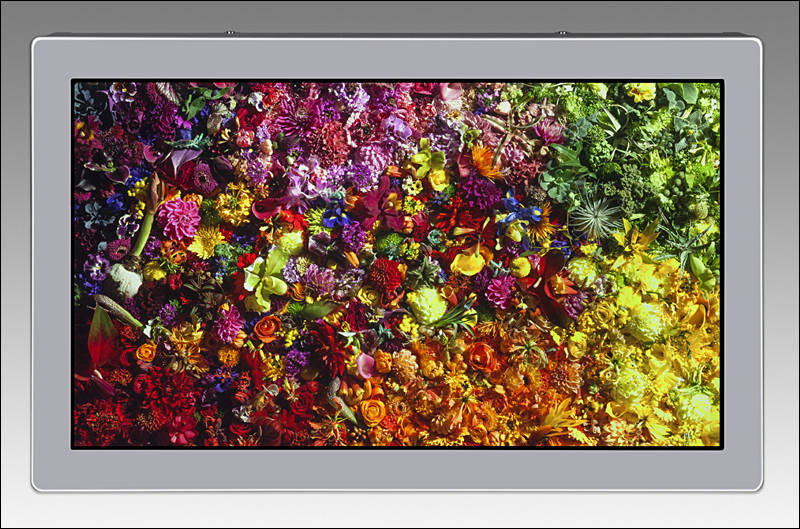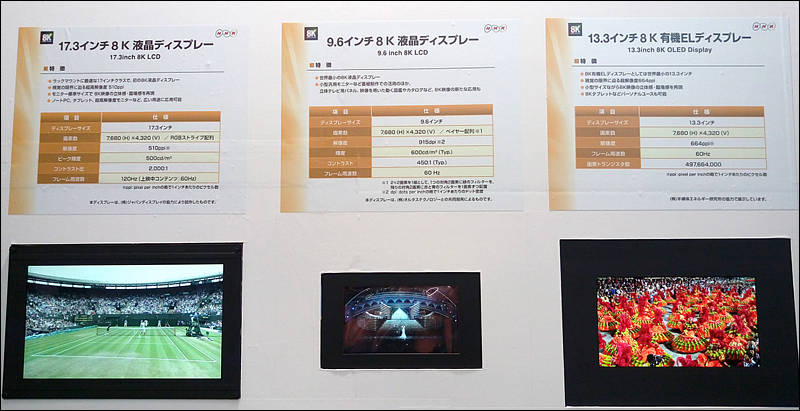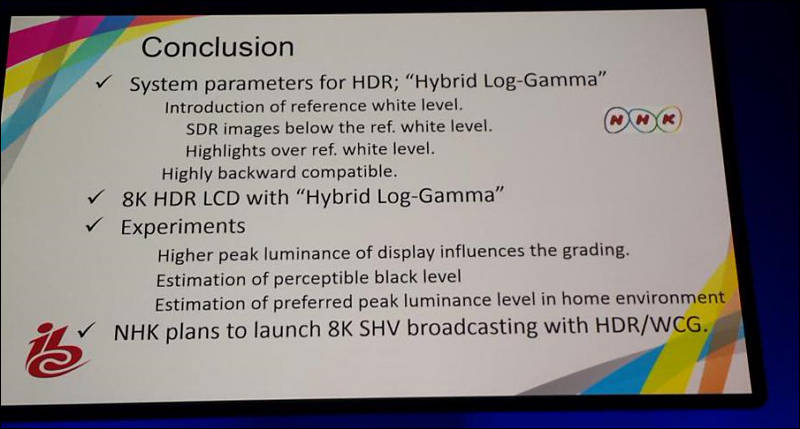
It allows to keep PV going, with more focus towards AI, but keeping be one of the few truly independent places.
-
Sure, but the demand for timelapse videos is pretty limited, and working with 4 synchronized cameras is lots of effort for little return. Just look how few stereoscopic movie productions bother two use 2 cams, but only apply digital 3d effects in postproduction.
It's like with all those "more than 5.1 channel" audio formats: A few examples are produced "because it can be done and draws attention while it's new", and then daily routine production goes on barely utilizing 5.1 to its possibilities - because it's just more work for marginal additional profits.
-
I wonder whether those display guys ever bother to discuss where >= 8k video material would come from.
You can even today make 8K movie as timelapse.
You can also make it using 4 synchronized 4K cameras and software processing to improve resolution.
-
I wonder whether those display guys ever bother to discuss where >= 8k video material would come from.
Just look how today the vast majority of even A-Movies are produced in 2k. And when you look at the results, only very few of those 2k movies bother to be shot and focused such that this resolution is actually utilized.
Ok, there will be some push towards 4k shooting/post-production now that 4k TVs are more common, but you can bet that the ratio of movies actually being focused such that 4k resolution is utilized will be even smaller than the ratio of fully-2k-utilizing productions today.
I think it will be at least 10 years until we'll see significant amounts of material actually exploiting 4k resolution to its fullest. And I doubt that aside from a few sports live events under bright sunlight we'll see 8k productions actually using 8k resolution in the next 20 years, maybe not even after that.
-
At the China Information Technology Expo (CITE) 2016 in Shenzhen, southern China, during April 8-10, China-based TFT-LCD panel makers focused on exhibiting Ultra HD TV panels, including BOE Technology's 98-inch 7680 by 4320 (8kx4k) model and 82-inch 10240 by 4320 (10kx4k).
-
85" if you're sitting really close, maybe. At a distance of 10-12 feet or so, 85" is close to the minimum size to perceive 4K resolution.
-
or the folks that still distrust anything but a DVD?
It is same industry that offer this folks DVDs, as it is very profitable business :-)
8K will have very big problem due to progress stall in semiconductors.
TV industry on their side is pretty ready for 8K, they just do not want to tell you that actual visible advantages require you to have 85" TV as absolute minimum size, preferable to give TV all your big wall .
-
I don't know who is right and who is wrong: the industry that launches all the new technologies faster the market can take any notice of it, or the folks that still distrust anything but a DVD?
-
Brookman Technology, Inc. has commenced the delivery of engineering samples of image sensor BT3300N for 8K Super Hi-Vision broadcast, which was co-developed with NHK (Japan Broadcasting Corporation) and Professor Kawahito’s Group of Shizuoka University. Brookman Technology, Inc. starts its production and delivery under the agreement with NHK.
8K Super Hi-Vision is set to begin test broadcasting in 2016 and roll out full broadcasting by 2018. The image consists of 33Mpixels (7680 x 4320), and is 16 times larger than the current HDTV.
-
Panasonic Corporation today announced that it has developed single cable and connector solution that enable the transmission of uncompressed full-spec 8K video signals.*1
Currently, to transmit video signal via connector-equipped cables from an 8K signal source or other devices to an 8K display, 4K-equivalent images are transmitted using four HDMI cables, and are then combined to show in 8K resolution by using image processing. Panasonic’s newly-developed connector-equipped cable, which uses plastic optical fiber technology, can achieve the transmission full-spec 8K video via a single cable, with improved bandwidth and length.
http://shop.panasonic.com/about-us-latest-news-press-releases/ces2016-8k-video.html
-
The granular details of a church exterior in one scene drew audible gasps from a few of the dozen or so audience members able to fit into the screening room. But the overall experience was rather lackluster.
http://www.theverge.com/2016/1/7/10725492/i-was-taken-for-a-ride-by-canon-s-8k-experience
-
At this year’s Consumer Electronics Show (CES) in Las Vegas, NV January 6-9, Canon U.S.A., Inc., a leader in digital imaging solutions, will challenge attendees to see the impossible at booth #13106 in the Central Hall. Canon’s booth will feature a Canon 8K Ride Experience where attendees can see the future of visual imaging and experience, firsthand, the physical and emotional reactions that take place when an 8K video projected on a large screen simulates a physical journey. There will also be an 8K Photo Gallery that displays precise moments from an 8K video. The Canon booth itself will be composed of three environments simulating a home, an office, and a professional studio. Within each zone Canon will offer hands-on demonstrations of current real-world imaging solutions for attendees to experience themselves.
“We believe there really is only one way for our valued customers and users to truly understand and embody Canon See Impossible and that is through seeing and experiencing real life examples of how Canon digital imaging solutions can impact their daily lives on both a professional and personal level,” said Yuichi Ishizuka, president and COO, Canon U.S.A., Inc. “We are excited for attendees to experience these solutions at our CES 2016 booth as well as have them enjoy the unique Canon 8K Ride Experience, which will be new to most attendees.”
Introduced at Canon EXPO, held this past September in NYC, this 8K Ride Experience projects 8K video on large screens surrounding viewers to give them a unique sense of movement while sitting or standing still. By experiencing imagery from all angles, the technology can simulate a physical journey often sparking a physical or emotional reaction.
-
G7 and GH4 are enough cameras to do an IMAX release film, you just need to know how to do it...
-
IMDB reports Star Wars VII have scenes done with 35mm film and it looks good in the bbbiiiggg screen,
If it had been shot on modern digital camera it'll look even better. Idea to using film was part marketing and part political decision (to save Kodak).
-
8k makes sense for IMAX theaters. I saw Star Wars VII in IMAX 4k bbbiiiiiggggg screen and I can see the pixels even from last seat.
Interesting thing: how good 35mm film is... IMDB reports Star Wars VII have scenes done with 35mm film and it looks good in the bbbiiiggg screen, a little soft, but beautiful.
-
Panasonic will once again develop image sensors after freezing such operations for the last few years, aiming for applications including 8K ultrahigh-definition technology.
Image sensors turn light into electronic signals, and are used in digital cameras, smartphones and other devices. CMOS (complementary metal-oxide semiconductor) sensors are a well-known type. Panasonic will spend around 10 billion yen ($80.8 million) to develop next-generation image sensors, with plans to release them in fiscal 2018.
http://asia.nikkei.com/Business/Companies/Panasonic-resuming-image-sensor-R-D-with-eye-on-8K
-
Panel makers in China and Japan have already begun staking their claim in the market and Samsung Display along with LG Display are anticipating that 8K will begin taking off as early as 2018 and into 2020.
Huh.
-
It seems that lens resolution will be an issue for the 8k video. In the lenstip website they do measurements about lens resolution in line pairs per milimeter (lp/mm) and also with resolution charts.
The average resolution for a full frame lens is around 45-50lp/mm and a great m43 lens is around 77-82lp/mm. The resolution charts shows the lenses at around 2000 - 2600 lines resolution maximum in still photos. Using a full frame lens in m43 sensor is worse because the sensor magnify the center area so the lp/mm will be half compared to same lens in a FF camera, a focal reducer can help a lot.
So the still lenses can work good up to 4k resolution, sometimes lower resolution than 4k video, and maybe for 8k video there will be the need of new special lenses, high price.
Considering that the indie people can buy only low price lenses, so work with 8k video will not make sense. 4k video is the maximum resolution for our photo/still lenses, no matter they are m43, aps-c or ff lenses.
Example: the 12-35 lens at f4 is around 77lp/mm in the image center, the GH4 sensor in 4k is 8.1mm height, doing the maths this lens will resolve around 1250 lines in GH4 4k video.
The new full frame Sigma Art 20mm 1.4 can do around 47lp/mm, so it will resolve around 770 lines in GH4 4k video. With a focal reducer this can increase to around 1080 lines. Most good Full Frame lenses are around a 50lp/mm maximum, and this is stoped down to f5.6
In a full frame camera, considering the sensor 36 x 20,25mm, this same sigma lens can resolve around 1900 lines.
The RGB bayer pattern decreases the camera resolution a little bit, around 1,33x less than the pixel count, so a 2160p video will deliver a maximum 1620 lines. The GH2 is 1080p and is around 810 lines.
Lens resolution is a good reason for Panasonic release new cameras with the multi aspect sensor, a bigger sensor can use more image area form the lens and record higher resolution, more lp/mm. The GH4 sensor is 8.1mm height, 1250 lines with the 12-35 lens. The multiaspect sensor with 3840x2160 pixels for video would be 10,09mm height, and could record 1560 lines from the same lens.
All these maths shows that 4k video is the sweet spot resolution for a video camera and for the lenses we can buy, and all these maths are in image center, in corners the lenses resolution is worst.
-
Hisense will begin selling 8K TVs by the end of 2015, according to company management as quoted in a report from Japan-based Nikkei Electronics.
The report said Hisense believes that China's consumers are increasingly aware of growing TV trends in China and have already familiarized themselves with Ultra HD (4K) content. The consumers are also aware that the next stop in terms of resolution is 8K and they want the best of the best regardless of the limited content in the market, according to the report.
-

Japan Display Inc. ("JDI") has announced the development of the world's first 17.3-inch high resolution (7,680(W) x RGB x 4,320(H) pixels), fast response (frame rate 120Hz) liquid crystal display (LCD) module, the same size as the standard monitor commonly used for the video image production.
The LCD module, based on low temperature poly-silicon (LTPS) technology with true 8K pixels (RGB stripe arrangement), realizes high definition (510ppi) images, and the 120Hz frame rate enables smooth playback of moving image. By providing wide viewing angle, high contrast and little color shift, the advantages of IPS technology enable reproduction of life-like 8K image with a sense of depth in image quality.

 zebra81.jpg800 x 529 - 129K
zebra81.jpg800 x 529 - 129K -
Sharp is expected to release 8K monitors aimed at the B2B segment in Japan by the end of October 2015 as part of its first step in commercializing the technology, according to Japan media.
Japan is moving toward 8K resolution as a national standard by 2020 and makers estimate that 8K could reach a penetration of 30% by 2018 in the TV segment. Pushing 8K monitors into the market would be a first step for gaining visibility in the 8K segment, and Sharp has already begun to see orders from major outlets such as NHK Television Network, the reports said.
The company's 8K monitors sized 85-inch will come equipped with IGZO display technology and be priced initially at around US$12,500-13,300. Sharp will first promote the technology in the medical segment, art museums and broadcasting units.
-
Gosh - I'm still trying to max out on 1080p and everybody's soon to aim at 8k
Howdy, Stranger!
It looks like you're new here. If you want to get involved, click one of these buttons!
Categories
- Topics List23,991
- Blog5,725
- General and News1,353
- Hacks and Patches1,153
- ↳ Top Settings33
- ↳ Beginners256
- ↳ Archives402
- ↳ Hacks News and Development56
- Cameras2,367
- ↳ Panasonic995
- ↳ Canon118
- ↳ Sony156
- ↳ Nikon96
- ↳ Pentax and Samsung70
- ↳ Olympus and Fujifilm101
- ↳ Compacts and Camcorders300
- ↳ Smartphones for video97
- ↳ Pro Video Cameras191
- ↳ BlackMagic and other raw cameras116
- Skill1,960
- ↳ Business and distribution66
- ↳ Preparation, scripts and legal38
- ↳ Art149
- ↳ Import, Convert, Exporting291
- ↳ Editors191
- ↳ Effects and stunts115
- ↳ Color grading197
- ↳ Sound and Music280
- ↳ Lighting96
- ↳ Software and storage tips266
- Gear5,420
- ↳ Filters, Adapters, Matte boxes344
- ↳ Lenses1,582
- ↳ Follow focus and gears93
- ↳ Sound499
- ↳ Lighting gear314
- ↳ Camera movement230
- ↳ Gimbals and copters302
- ↳ Rigs and related stuff273
- ↳ Power solutions83
- ↳ Monitors and viewfinders340
- ↳ Tripods and fluid heads139
- ↳ Storage286
- ↳ Computers and studio gear560
- ↳ VR and 3D248
- Showcase1,859
- Marketplace2,834
- Offtopic1,320











